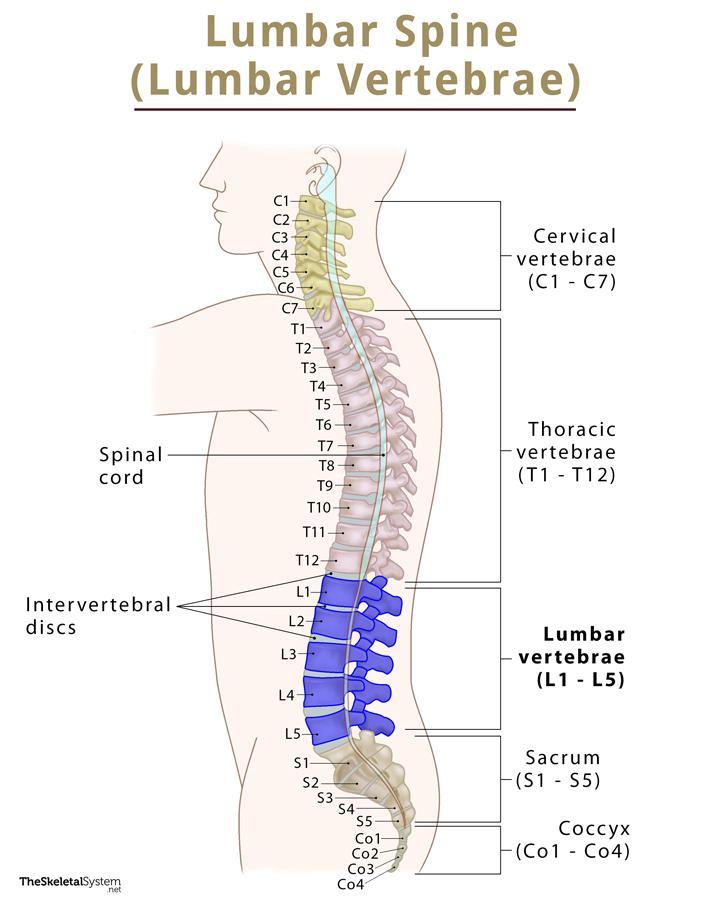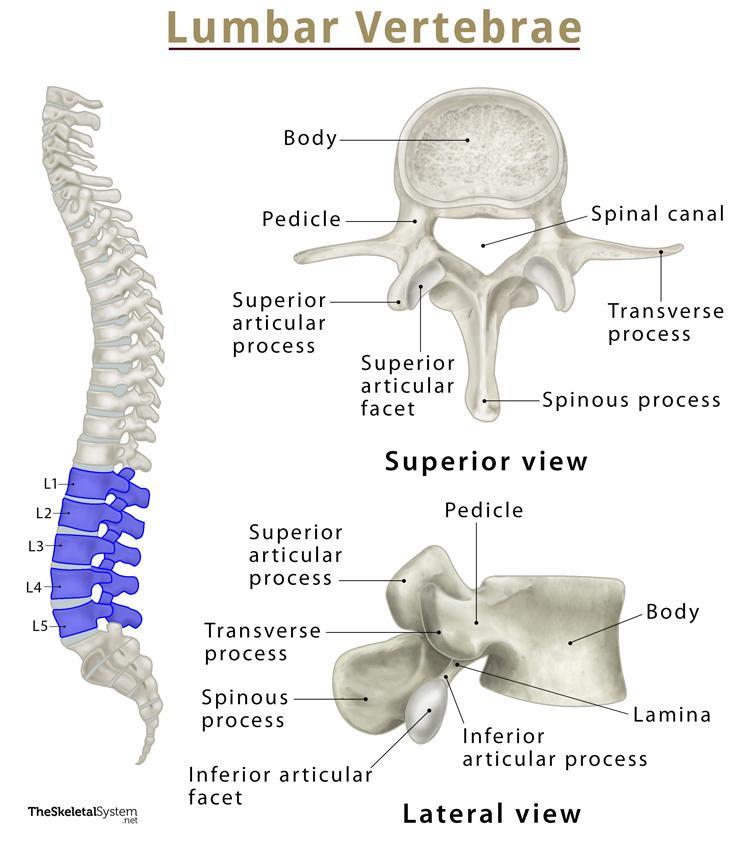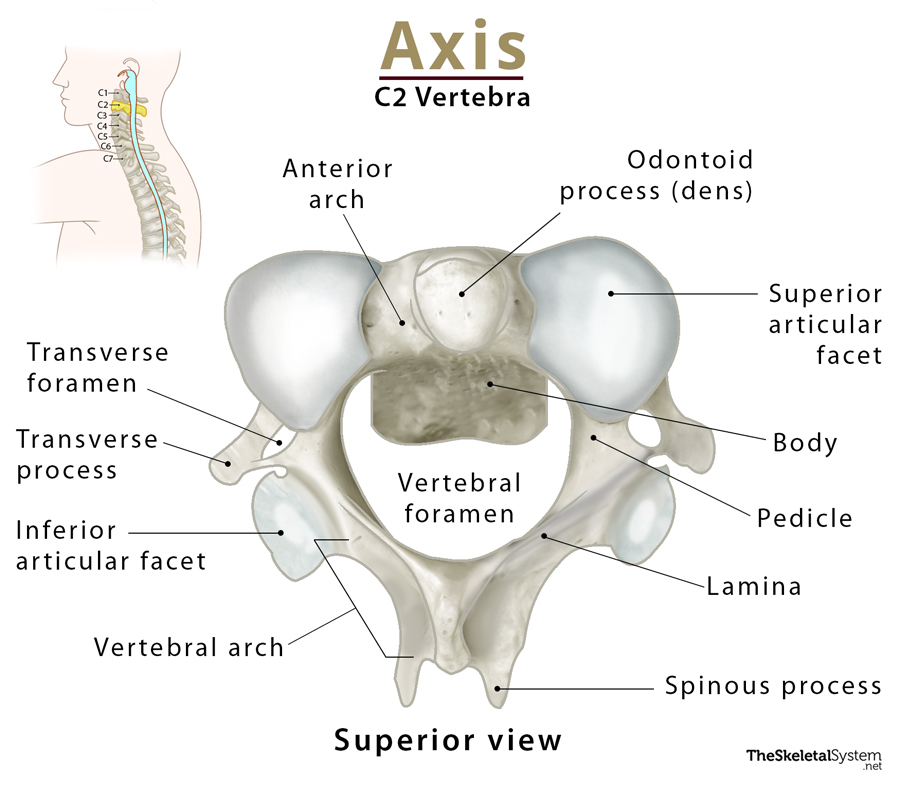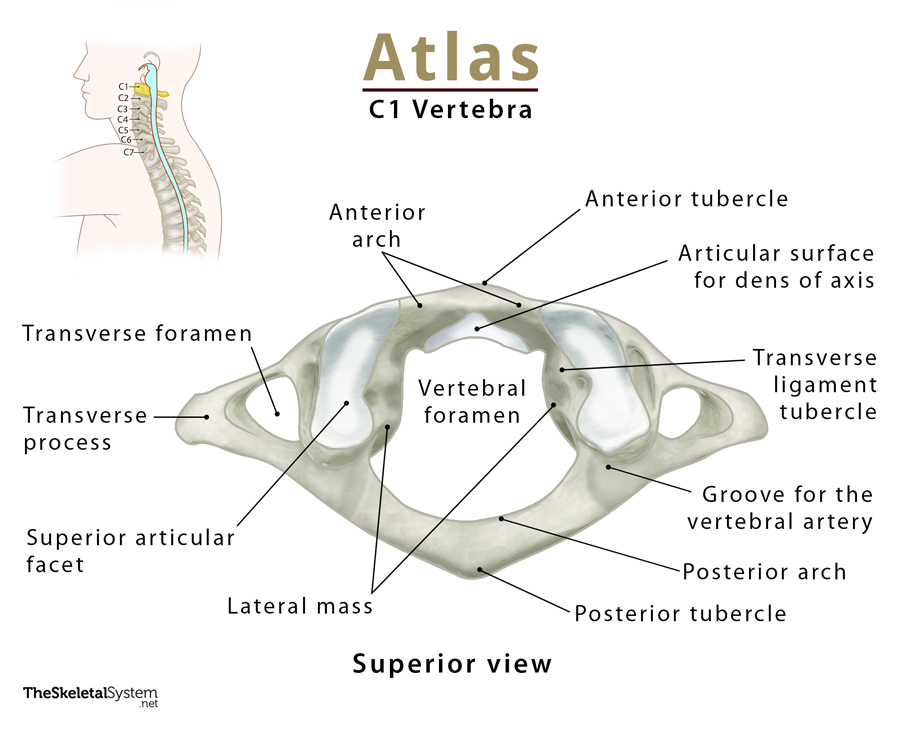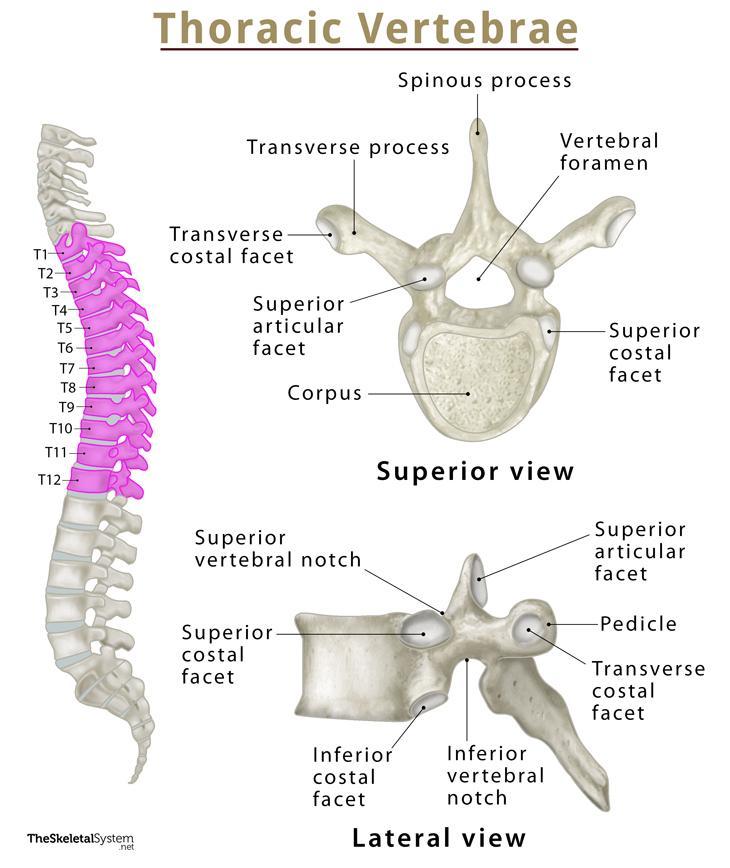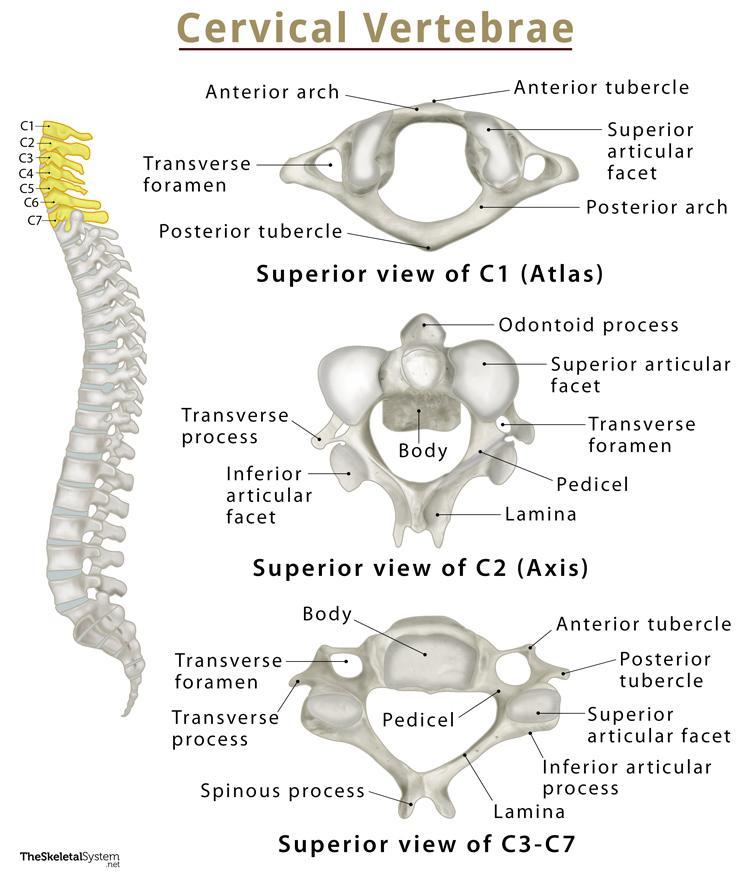Lumbar Vertebrae (Lumbar Spine)
Table of Contents:
Published on May 24th 2022 by staff
What is the Lumbar Spine
The lumbar spine is the third and lowermost part of the spinal column, consisting of 5 lumbar vertebrae, L1-L5. They are found in the lower back, supporting the body’s weight and providing flexibility and movement. These are the largest among all the vertebrae found in the spine.
Where are the Lumbar Vertebrae Located
They are located in the lower back, starting from the 12th thoracic spine and extending to the sacrum.
Quick Facts
| Type | Irregular bones |
| How many are there in the human body | 5 |
| Articulates with | Each other, and with the pelvis |
Functions
Supporting Body’s Weight: The lumbar vertebrae support the upper two parts of the vertebral column — the cervical and thoracic vertebrae — and the head. As a result, it is responsible for supporting the whole body’s weight, and distributing the weight from the upper body to the legs. It is also the part of the vertebral column responsible for bearing the weight when you lift or carry any object.
Allowing Movement: It connects the upper body to the pelvis, and allows body movements like bending, rotation, and flexion of the lower back. L4 and L5 are mainly responsible for these.
Protecting the Spinal Cord and Nerves: The spinal cord, which starts at the base of the skull, ends here in the lumbar spine, specifically at L1. The lumbar vertebrae provide a protective casing for all the spinal nerve roots (cauda equina) at the end of the spinal cord. These nerves then run down into the legs and feet to control movement and sensation.
Anatomy
These are the largest and strongest of all the vertebrae, with the individual bones having a typical structure.
Each vertebra has a thick, kidney-shaped vertebral body and a vertebral arch. A pair of pedicles and laminae from each arch arises on both sides, enclosing the triangular vertebral foramen.
In a quadrilateral bony protrusion, the spinous process arises from the middle of the vertebral arch, projecting backward and downward. The bony wing-like projections on either side of the spinous process are called the transverse processes. Several spinal muscles attach to the spinous and transverse processes.
There are accessory processes on the posterior side of the base of each transverse process. Two bony projections, the superior and inferior articular processes arise from both sides of the arch, bearing their corresponding facets, the superior and inferior articular facet). The mammillary processes arising from the lateral side of the superior articular processes is one unique feature of the lumbar vertebrae.
Articulations
- Intervertebral symphyses: The facet joints between the individual vertebra through intervertebral discs
- Lumbosacral Joint: The joint formed between the fifth lumbar vertebra (L5) and the first sacral segment (C1).
Muscle and Ligament Attachments
Muscles attached
- Erector spinae
- Interspinales
- Intertransversarii
- Latissimus dorsi
- Rotatores
- Serratus (posterior and inferior)
Ligaments attached
- Ligamenta flava
- Anterior longitudinal ligament
- Posterior longitudinal ligament
- Intratransverse ligament
- Interspinous ligament
- Nuchal ligament
- Supraspinous ligament
- Facet capsular ligament
FAQs
Ans. Though unusual, around 10% of all people have a 6th lumbar vertebrae in their lumbar spine. Though it often goes unnoticed and causes no problems, it may complicate the condition in case of a spinal cord injury.
References
- The Lumbar Spine — Teachmeanatomy.info
- Lumbar Vertebrae — Physio-pedia.com
- Anatomy, Back, Lumbar Vertebrae — Pubmed.ncbi.nlm.nih.gov
- Lumbar Vertebrae — Sciencedirect.com
- Lumbar Vertebrae — Innerbody.com

